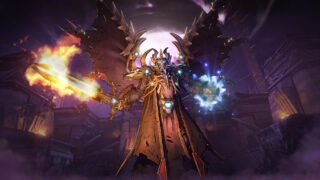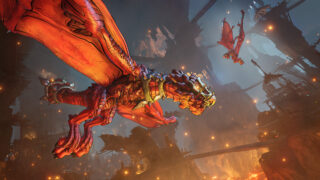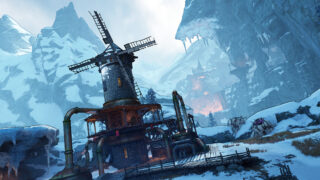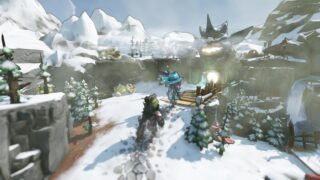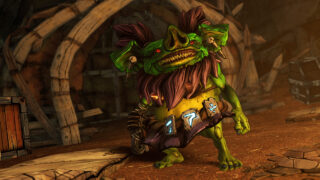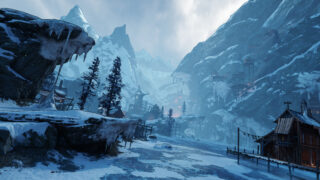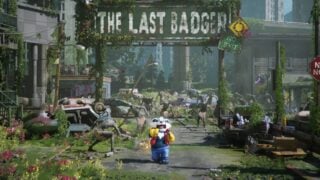Hands-On: Borderlands combat has never been better than in Tiny Tina’s Wonderlands
The D&D-inspired spin-off could make you forget that you hate Tiny Tina

Of all the characters to make a spinoff game set in the Borderlands universe about, Tiny Tina was probably pretty low for many fans.
A racing game starring “Catch-a-Ride!” legend Scooter from Borderlands 2 would have likely earned a less divisive reaction than when Tiny Tina’s Wonderlands was announced.
Tina, who has been with us since Borderlands 2, has, for whatever reason, evolved into a bit of a mascot for the franchise, right alongside Claptrap. This has meant that when people think of Borderlands, they don’t think of the genuinely brilliant shooting, fun missions or interesting locations, but just these characters firing catchphrases back and forth until suddenly you’ve bought their Funko Pops.
Tiny Tina’s Wonderlands takes place inside a Dungeons and Dragons-like game called Bunkers and Badasses. The distinction, other than that legal one, is that instead of playing a turn-based RPG like D&D, it’s a first-person shooter, like Borderlands.
This concept is based on DLC from Borderlands 2, Assault on Dragon Keep which became a bit of a fan favourite. This time, the tabletop inspiration is taken significantly further. There’s an overworld that resembles a board game, there are multiple-sided dice everywhere, and even the character skill screen resembles a spec sheet from a game of Dungeons and… sorry, Bunkers and Badasses.
How much you get out of the game’s homage to tabletop RPGs is largely dependent on how much you’re into them in real life. We’ve played a few and we’ve been conscious during the massive surge in D&D’s popularity over the past few years, so the references can be pretty funny, but it does occasionally feel like you’re watching an episode of the Big Bang Theory.
The good news is, the combat has never been better in one of these games. Joining the already excellent shooting mechanics are improved melee weapons and a whole spell casting system. This works similarly to how abilities like throwing out Roland’s turret would work in older games. They’re on a cool down and are vital if you’re going to play the game aggressively, which the enemies encounters, at least the ones we played, seem to encourage.
The enemy AI seems to have improved from the days of Borderland’s psychos shambling up to you as you pop their heads over and over. The enemies themselves also get a big refresh, at least from what we’ve seen it’s not just Borderlands enemies reskinned, there are new enemy types, sizes and behaviours that really help to make the game feel more like a unique experience and less like a glorified expansion.
How many spells are on offer and just how unique each of the game’s classes are going to be is yet to be seen, but we quickly found ourselves accepting any quest that came our way, just to have an excuse to play with the combat some more.
It makes us really look forward to the endgame content, presuming it follows a similar path to Borderlands with large raids, massive bosses and multiple New Game+ runs. We only got to play single player, but the prospect of playing in a group, with multiple abilities all combining feels like a fun one.
“The enemies themselves also get a big refresh, at least from what we’ve seen it’s not just Borderlands enemies reskinned, there are new enemy types, sizes and behaviours that really help to make the game feel more like a unique experience and less like a glorified expansion.”
Borderland’s excellent procedurally generated loot system is also back, bringing with it the dizzying number of weapon possibilities that have been a staple of every game in the series. The buzz of killing an enemy only for it to have a purple flair shoot out of its head denoting a rare item is still just as potent.
Borderlands always captured the Diablo loot loop well, and Wonderlands feels like no exception. It’s possible that it was just because of the demo we played, but it felt like significantly more stuff was dropping from every enemy, which only cranks up that micro-dose of dopamine that these games are so good at providing.
The tiny elephant in the room is that throughout your journey, which involves fairly standard Borderlands-like missions, Tina and the other characters are constantly talking. We’re hopeful that we just happened to be playing a significant moment in the narrative and thus they were going into overdrive, but we could barely hear the sound of the bullets for the incessant podcast that was blaring into our ears.

Some of the lines were moderately funny, but all too often it felt like that person in your group that says one funny thing, then tries to follow up on it to extend the laugh only for it to fall flat on its face.
There will be people for whom Tina’s role as the main character is a dealbreaker, and that’s probably fair, but the Borderlands games have been the ultimate “No thoughts, head empty, shoot and loot” games in the past, and we’re getting the same feeling from Wonderlands, which is just what we wanted it to be.
If you can put up with the humour that seems to be ripped right from a discount bin of HMV t-shirts from 2013, there’s some really fun and expansive combat to be found in Tiny Tina’s Wonderlands, and we’re definitely more interested to check out the full experience.
The main question is just how deep and varied the new magic system will be, and if Wonderlands can still provide those memorable boss fights and maintain the addictive drip-feed of loot.


